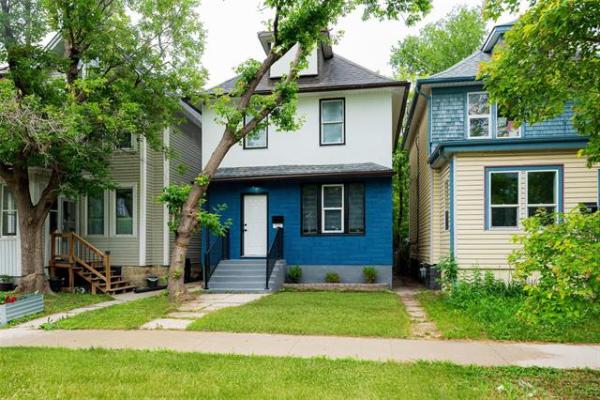QUESTION: We have a 2,000-square-foot cab-over home with central exhaust in two bathrooms and one vent in the main living area. The central exhaust in the large ensuite off the cab-over bedroom does not clear the moisture as well as it should. Recently, we have added another bathroom in the basement. The plumber installed another central exhaust vent in that bathroom. We have actually closed off that vent as we haven't completed the bathroom so are not using it yet. We have trickles of moisture running down the ensuite bathroom walls after we shower. We would like to know how we can fix this.
I had the plumber out to inspect the amount of air being pulled from each of the vents. He said the amount is consistent throughout the house. He suggested we install a larger exhaust fan to move the air through the central exhaust. We had a 195 and now he installed a 250. Unfortunately, there has been no improvement with respect to the moisture on the walls. The plumber also said we should have installed a six-inch pipe to the upstairs bathroom rather than a five-inch pipe. Short of ripping out the walls, he has no other suggestion.
Can you think of anything we can do to improve the amount of air being sucked out of the ensuite vent? We have almost closed off the vent to the main room and we have half-closed the vent to the main-level bathroom, to no avail.
Thanks for taking the time to read this email. Audrey Kozak-Dobush, Winnipeg
ANSWER: Moisture buildup in bathrooms due to poor or missing exhaust fans is one of the most common defects I see in homes, but normally older ones with deteriorated windows, not newer homes with central exhaust fans. I will offer a couple of suggestions for simple ideas that may remedy your situation as well as a more elaborate upgrade, if those are not successful.
The main reason steam or water vapour are not able to be quickly drawn from the register in your master bathroom is the length of ducting between this area and the central exhaust fan, relative to the other bathrooms. The main-floor bathroom and the newer basement bathroom likely have minimal lengths of ducting, with only one or two elbows, to connect to the central fan in the basement.
With each change in direction or elbow, and with every additional metre of ducting, friction is significantly increased, reducing air flow from the registers in the bathrooms. This will be compounded by the high moisture content in the bathroom air and debris and dust that builds up in these metal pipes. In a nutshell, the shorter the distance between the bathroom and the fan, the better the chance of effectively removing water vapour from your shower.
While shutting the dampers on the registers on the main floor and basement may have minimal positive effects, it will do little to eliminate the problem, as you have seen.
I would suggest opening them up to prevent moisture problems developing there, as well. Also, increasing the size of the ducting from the bathroom register may reduce the friction somewhat, but would not be effective without a significant increase in the size of the fan, as well. A 50-CFM increase in air movement from the fan may not be nearly enough to compensate for these issues. Only a significant increase in airflow would be enough to solve your problem, from that perspective.
As most readers will know, I often suggest calling in professional tradespeople when problems like this occur but you may have gone to the wrong individual in this case. While your plumber may have some knowledge of air movement and ventilation in homes, that is not usually their forte.
Plumbers are trained about plumbing vents, slopes and angles to know the correct methods for installation of plumbing drains, supply pipes and fixtures but not necessarily about ventilation systems. That is the domain of a heating, ventilation and air conditioning (HVAC) technician.
That is likely the type of trade that installed the ducting for the central exhaust in the first place. Unless they made a serious error in calculations, or there is some defect or blockage in the ducting to your upper-floor bathroom, the problem is not in that area. Having said that, air movement and air pressures within a modern home, especially one with a complicated floor plan like yours, can be quite complex.
The key to removal of excess moisture from your shower is to increase the airflow to the bathroom, either through the exhaust ducting or the central heating system.
While it may be difficult to fix the airflow from the central exhaust fan, as you have noted, it may be very simple to improve that from the heating system. This can be achieved by cross-connecting the controls for the exhaust fan with the furnace fan. In other words, when the switch is turned on in your bathroom for the central exhaust fan, it should also engage the furnace fan controls, to kick the furnace fan on to maximum.
This should be a fairly simple procedure for an electrician or HVAC technician as long as the fan and furnace are in close proximity and the basement ceiling above both is accessible. This simple change may allow enough air to be circulated through the heating system ducting in the entire home to change the air pressure in your bathroom and help draw considerably more air through the exhaust fan.
At a minimum, the additional air movement will help the damp air dry more quickly or prevent moist air from being trapped in corners of the bathroom that the exhaust fan cannot properly service. If you still have problems with the moisture after following my suggestions, replacement of your central exhaust fan with an HRV may be the ultimate solution.
Ari Marantz is the owner of Trained Eye Home Inspection Ltd. and the president of the Canadian Association of Home & Property Inspectors -- Manitoba (www.cahpi.mb.ca). Questions can be emailed to the address below. Ari can be reached at (204) 291-5358 or check out his website at www.trainedeye.ca
trainedeye@iname.com



